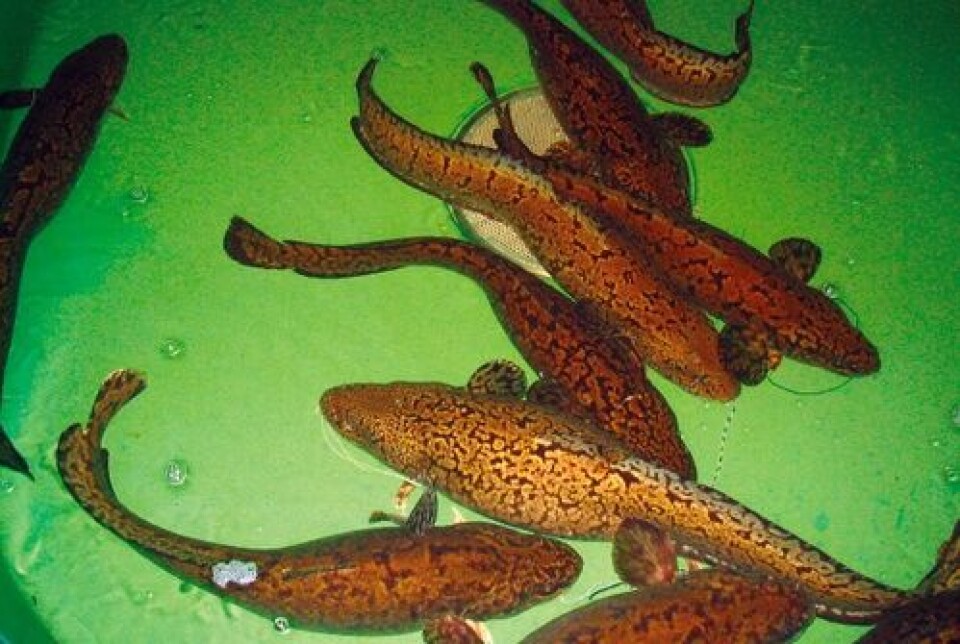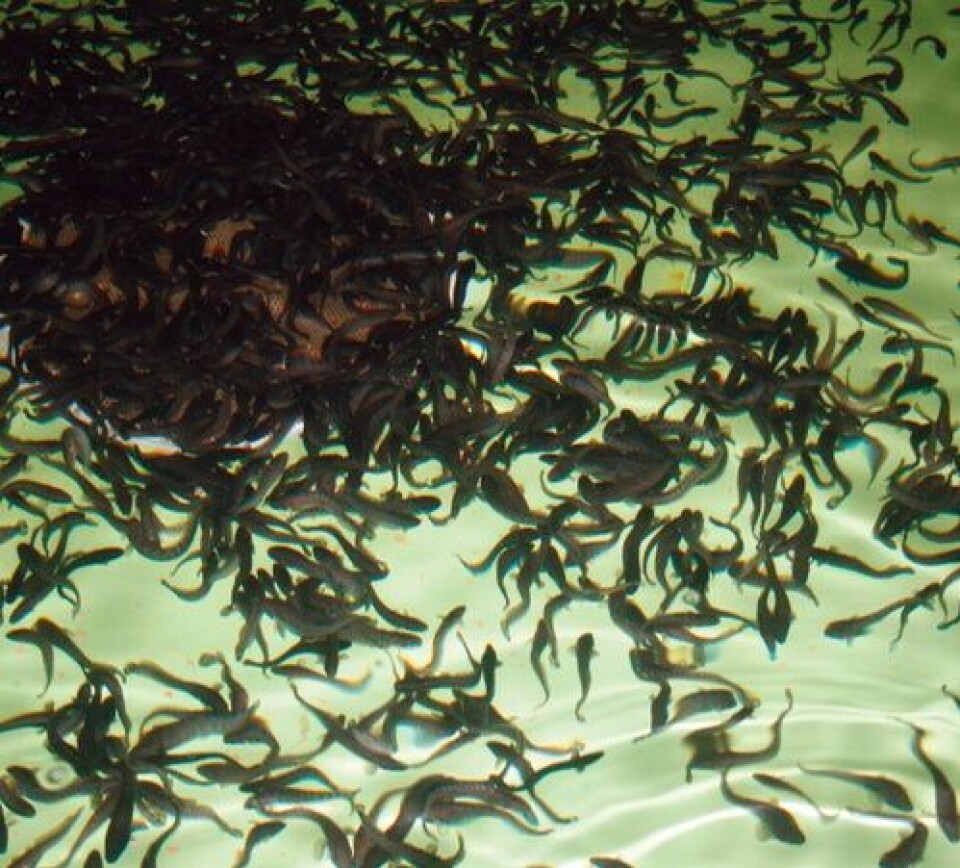Burbot – a new candidate for cold water aquaculture

A freshwater fish which tastes like American lobster could be the next big thing in cold water aquaculture, reports Velo Mitrovich. Burbot (Lota lota) is found in the wild in streams and lakes across the northern hemisphere above 40°. Referred to in Canada and the USA as ‘the poor man’s lobster’, the carnivorous fish is the only freshwater species that is related to cod. Depending on where it is found, it is also called an eelpout, freshwater cod, lawyer, loche or ling. Unlike the salmonids, the burbot is not noted for its grace and beauty, looking like a cross between an eel and American catfish. The body is elongate, almost eel-shaped, with long, soft-rayed dorsal and anal fins that meet a rounded tail. Although it is smooth and slimy to the touch, the skin is embedded with very small, cycloid scales. The head of the burbot is broad and somewhat flattened. It has a large mouth containing several rows of small teeth on the jaws. A single, whisker-like barbell protrudes from the tip of the chin. While the largest on record weighed 11.4kg – about 25lbs – most mature burbot are around 0.5-3kgs (1.1-6.6lbs) and range in size from 40 to 60cm (1.3-2ft). There has never been a large commercial fishery for burbot and what exists has recently declined even further due to a decrease in natural stock. Fisheries for burbot are found in Russia, Sweden, Finland and the Baltic countries, and while a much smaller fishery exists in the Great Lakes, there burbot are usually not the targeted fish. In Canada and the USA, burbot are more commonly caught by sports fishermen. In the past, much of the aquaculture development of burbot has come about through restocking efforts. However, it is now being promoted in Germany as a farmed species. This only has the chance to increase to other countries as consumers discover its taste. According to those involved in farming burbot, it has a feed conversion ratio of 1:1 and can reach market size in 1.5 to 2.5 years depending on year round temperatures. Burbot is considered as excellent food fish due to its tasty white, low fat and boneless meat. In addition, burbot roe and liver is appreciated as delicacies and its liver is much higher in vitamin A and D than cod liver. A market research study in Germany found that burbot could obtain middle to high market prices. By filleting the fish and marketing the liver, a higher net product could be achieved. The preference of this benthic and nocturnal fish for cold water temperatures makes the burbot an excellent candidate for inland cold water aquaculture and could increase its diversification.

LOTAqua hatchery Fishery biologist Hendrik Wocher, who runs a private hatchery (LOTAqua hatchery, Germany) since 2012, has managed a 6-year pilot project examining the potential of burbot aquaculture. Within this project questions about the whole production cycle were examined. An additional 10-year practical research project, which was conducted by aquaFUTURE e.K., looked at how to optimise burbot farming for a successful future. The preliminary findings will enable interested farmers with the necessary tools to start-up a commercial burbot farm. Fingerling production at LOTAqua hatchery is based on a natural spawning brood stock, which was selected by growth and sexual maturity. Production runs from April to September. After rearing burbot larvae with live food and then weaning onto a commercial diet, juvenile burbot are reared up to a weight of 10g for sale. Other sizes will be available on request in the future. “Right now we start feeding the young fry with artemia,” says Hendrik Wocher. “Burbot are very aggressive on feed at water temperatures above 8°C and can be cannibalistic. You need to make sure they have plenty of food all the time and when you move them over to commercial feed, make sure the feeding machines are working continuously.” Depending on the density of the young fish, burbot should be sorted according to size, again, to minimise cannibalism.

“Like most carnivorous fry and fingerlings, as long as you feed them right, watch the stocking density and sort by size, you will not have any problems,” says Dietmar Firzlaff of aquaFUTURE e.K. “As of yet no feed manufacturer is making feed specifically for burbot and we are researching which feed works best for them,” he adds. Growing conditions for young burbot are similar to trout in regards to water quality and oxygenation. At LOTAqua hatchery fingerlings for restocking or reintroduction programs of burbot are also produced. These programs should be realized in terms of genetic originals in respect of the individual river systems. For stocking programs in the Rhine River System, an autochthon brood stock exists. Grow-out production According to Firzlaff, potential customers of burbot fingerlings will receive professional advice for aquaculture production during the entire production period. This includes, for example, the consulting of designing and construction of the production facility (Billund Aquaculture Service; Denmark and aquaFUTURE e.K; Germany), as well as recommendations about husbandry conditions, feed management with commercial feeds, and processing production. Wocher says that the aim of an economic production of farmed burbot should be a final fish weight of 400-500g (around one pound) prior to onset of sexual maturity. In this case, fillet and liver contents of 40% and 10% are possible. “The prerequisites for an aquaculture year round production of burbot are water temperatures between 10° and 16°C (50-60°F), the use of covered tanks and automated feeders, as well as constant good husbandry conditions,” says Wocher. For more information contact Hendrik Wocher at www.trueschenzucht.de or Dietmar Firzlaff at www.aquafuture.de
























































